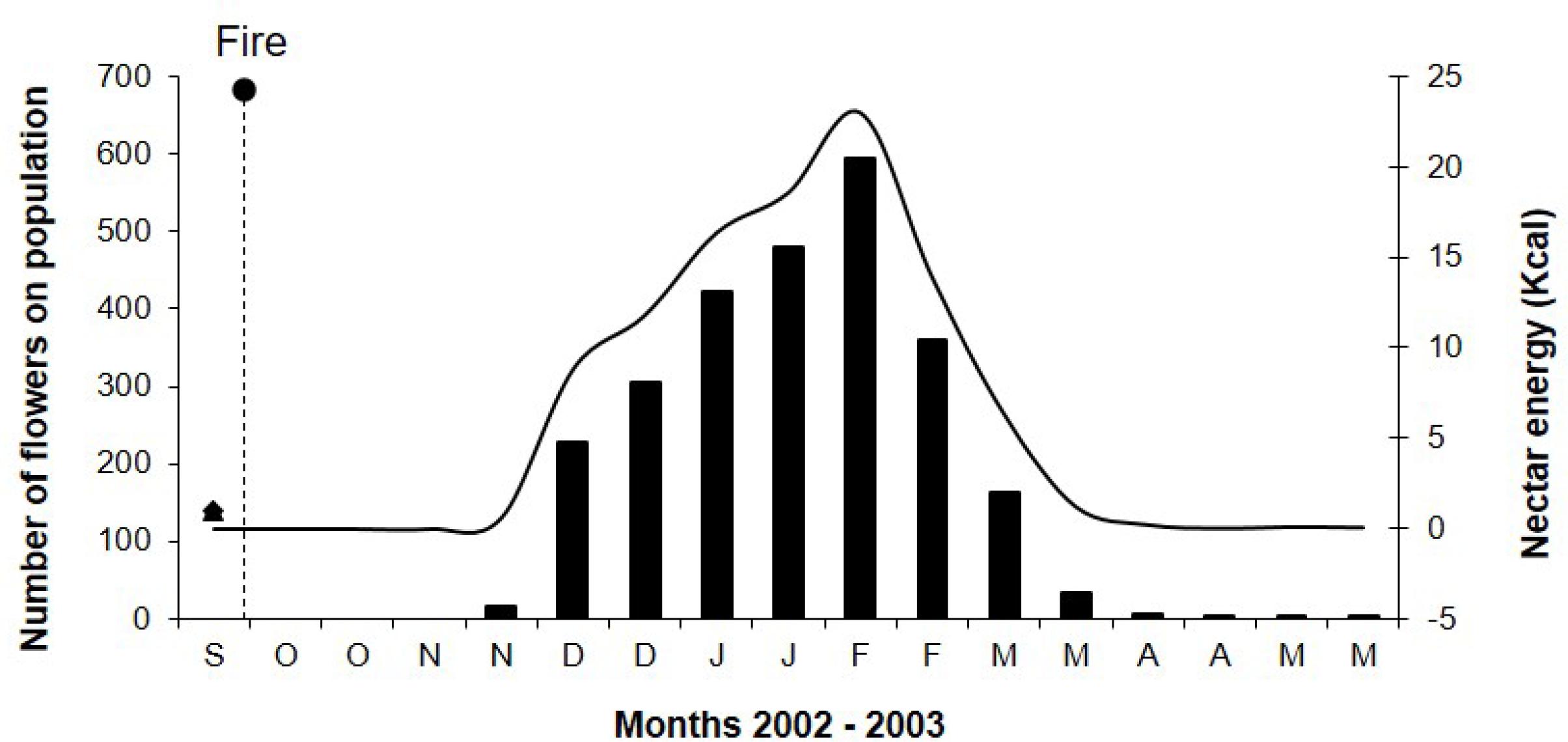Abstract
The massive post-fire flowering of Sinningia elatior (Gesneriaceae) was examined in an area of Cerrado (Brazilian savanna). To study the reproductive system, pollination tests were conducted in the field. Individuals of S. elatior were found isolated or grouped in the area, the orange to reddish flowers are odorless and tubular. Despite being a protandrous species, S. elatior is self-compatible with spontaneous self-pollination, without apomixis. The male phase lasted two days whereas the female lasted three days. The caloric reward per flower was estimated in 40.8 cal ± 4.2 (n = 20). The massive post-fire flowering of this species provided a large, episodic supply of nectar to nine hummingbirds’ species and 16 insects’ species. While all hummingbirds acted as pollinators, insects were only recorded as nectar/pollen thieves. The S. elatior population offered around 23 Kcal, supplying the energetic needs of approximately two to four hummingbirds per day. Post-fire massive flowering is rare and unpredictable in the Cerrado. Therefore, the fire regime acts shaping the flowering dynamics of some species, producing mosaics of temporary special offers of floral resources that affect not only the foraging dynamics of pollinators but also the crossing patterns of the plant species.
Key words:
Colibri serrirostris; Eupetomena macroura; hummingbirds; nectar; palm swamp


